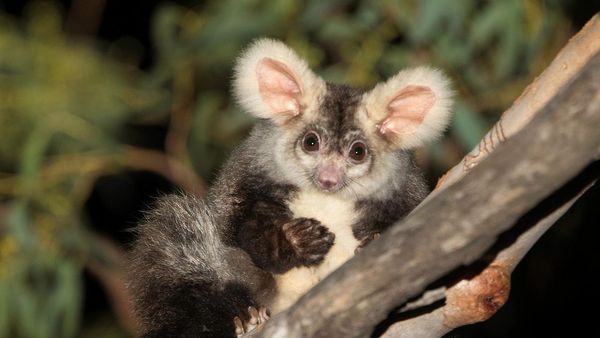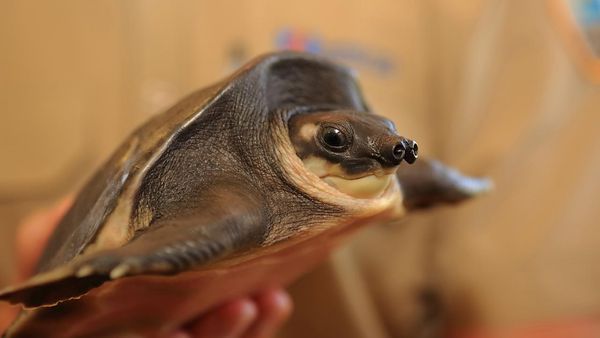
At 68, Dailan Pugh isn't sure which extinction event will come first - his own or that of an ancient frog named after him.
When news broke in recent days that Pugh's Frog had been listed as endangered under federal environment laws, the veteran conservationist felt a mix of emotions.
There was hope for better protection of an animal with genetic lineage stretching back 50 million years, one that could vanish within decades due to the key threats of habitat loss, climate change and disease.
But there was also boiling frustration as the Forestry Corporation continues to log the one, small patch of NSW where the frog exists - almost 20 years after it was declared endangered under state laws.

There's an absurdity to the situation that Mr Pugh finds hard to reconcile.
"When it's been up-listed to nationally endangered, and identified as more at risk they've got to review the logging rules, which are grossly inadequate.
"It's not rocket science."
Pugh's Frog was only described in 2004 after researchers realised it was a distinct species.
It was named after Mr Pugh in honour of his efforts to conserve its habitat in the boggy streams and soaks of the Gibraltar Range and Timbarra Plateau, near Tenterfield.
The Forestry Corporation is currently logging in the Gibraltar Range State Forest, and another forest nearby where the frogs are known to be.
"These frogs have got to have permanent moisture. But when you log the surrounding forest you get all this thirsty regrowth that just pumps all the water into the atmosphere and dries up the landscape," Mr Pugh said.
Climate change has further restricted the frog's limited range, pushing them to higher altitudes where drought and fires took a heavy toll in 2019.
Mr Pugh said 85 per cent of its habitat burnt, "eliminating some populations and reducing many others to just one or two calling males".
The Forestry Corporation are required to spend half an hour looking for the frogs before they start cutting down trees, he said.
That's "grossly inadequate" for an animal that's often tucked away in watery underground chambers, according to the conservationist.
"You need at least a day or more, rather than half an hour, to find all the ones in the vicinity," Mr Pugh said.
He says the Forestry Corporation failed to find a single frog prior to the current logging operation, and the only sightings on record are five he made on a field trip to the forest a couple of years ago.

Mr Pugh says it's up to federal Environment Minister Tanya Plibersek and her NSW counterpart Penny Sharpe to step up and defend the frog's last places of refuge from logging threats.
"If there is any intent to stop Pugh's Frog becoming extinct it is essential that logging now be excluded from the catchments above their nesting areas," he said.
AAP has sought comment from both ministers.
The Forestry Corporation, owned by the NSW government, says it's legally required to do a range of things to safeguard the frog and its habitat.
That includes protecting the land that runs alongside water courses, seeps, soaks and drainage lines, whether or not a frog is seen during targeted searches.
"Therefore the habitats of the Philoria pughi (Pugh's Frog) are captured in our planning and protected," it told AAP in a statement.










